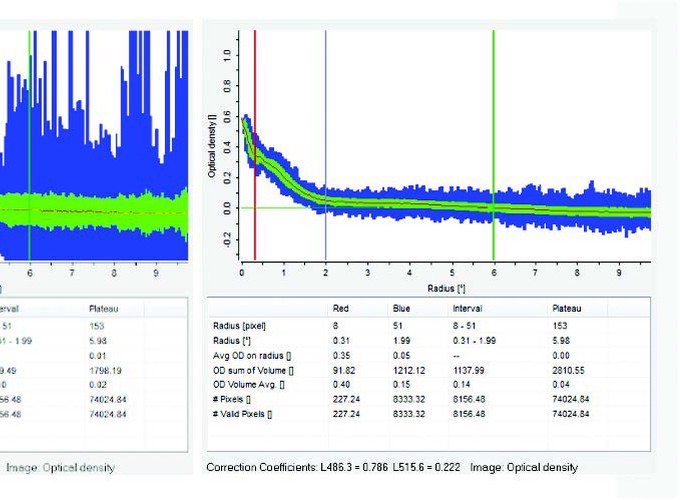Macular Pigment Optical Density Fluctuation as a Function of Pupillary Mydriasis: Methodological Considerations for Dual-Wavelength Autofluorescence

Macular Pigment Optical Density Fluctuation as a Function of Pupillary Mydriasis: Methodological Considerations for Dual-Wavelength Autofluorescence
Abstract
Purpose of the study: Macular pigment (MP), comprising the dietary carotenoids lutein, zeaxanthin and meso-zeaxanthin, is believed to benefit eye health and vision. Numerous clinical and research devices and techniques are currently available to facilitate MP optical density (MPOD) measurement. One of those techniques, dual-wavelength fundus autofluorescence (AF) is being increasingly used for measurement of MP in the eye. There is substantial methodological variation across the published studies that have employed this technique, including in relation to the use of mydriasis, the possible influence of which does not appear to have been addressed in the literature. This prospective cross-sectional study was designed to investigate the effect of mydriasis on MP measurement quality and MPOD values obtained with dual-wavelength AF using the Heidelberg Spectralis HRA+OCT device. Materials and Methods: Twenty-one healthy participants were recruited to the study. The mean age of participants was 44.8 years (± 14.63). Pupil size and MPOD were measured in one eye for each participant, initially under natural pupil conditions and subsequently 30 minutes following instillation of one drop of 0.5% tropicamide. Results: Despite providing MPOD measurements for the majority of undilated eyes (85.7% of eyes herein), pupillary dilation resulted in statistically significant changes in MPOD (p < .001 for central eccentricities). Our results indicate that the changes in MPOD were not uniform across the spatial profile. Marked improvements were also observed in image quality post-dilation (p < .002 for central eccentricities). Conclusions: This study clearly demonstrates that dual-wavelength AF measurements of MPOD in the same eye vary as a function of pupillary dilation status, with MPOD under-estimated across the entire spatial profile of MP for natural relative to dilated pupillary conditions. Mydriasis should, therefore, be used routinely for MPOD measurements using dual wavelength AF, pupil size should be reported and image quality optimized in order to ensure accurate MPOD quantification.